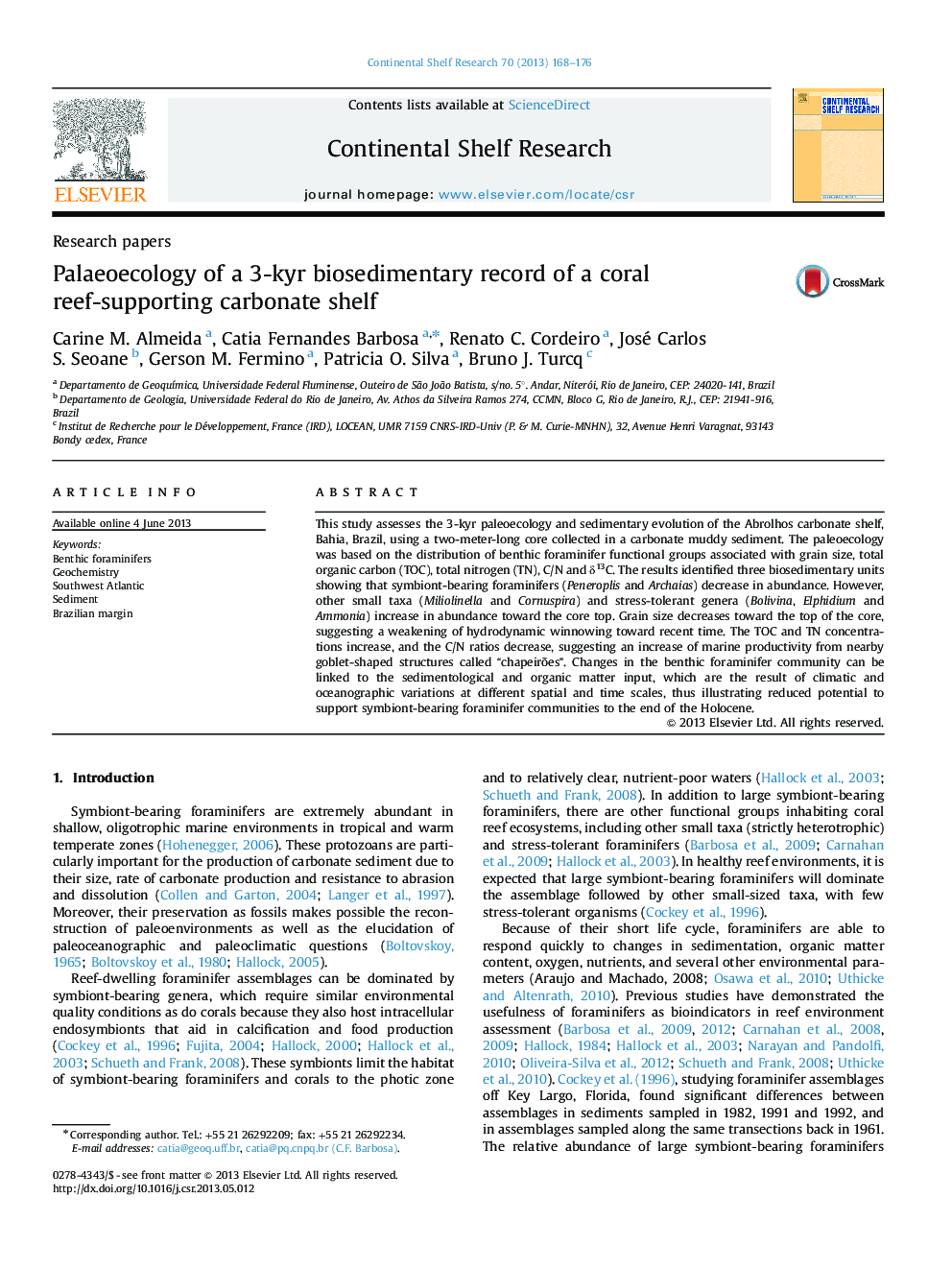| Article ID | Journal | Published Year | Pages | File Type |
|---|---|---|---|---|
| 4531991 | Continental Shelf Research | 2013 | 9 Pages |
•The core registers carbonate and environmental conditions for the last 3 kyr.•Larger foraminifers with few stress tolerant taxa occurred around 3 kyr.•Towards the recent, foraminifers show a prevalence of stress tolerant taxa.•The Little Ice Age (LIA) was the baseline environmental condition of minimum carbonate.•Since the LIA less favorable conditions occur reflecting high vulnerability.
This study assesses the 3-kyr paleoecology and sedimentary evolution of the Abrolhos carbonate shelf, Bahia, Brazil, using a two-meter-long core collected in a carbonate muddy sediment. The paleoecology was based on the distribution of benthic foraminifer functional groups associated with grain size, total organic carbon (TOC), total nitrogen (TN), C/N and δ13C. The results identified three biosedimentary units showing that symbiont-bearing foraminifers (Peneroplis and Archaias) decrease in abundance. However, other small taxa (Miliolinella and Cornuspira) and stress-tolerant genera (Bolivina, Elphidium and Ammonia) increase in abundance toward the core top. Grain size decreases toward the top of the core, suggesting a weakening of hydrodynamic winnowing toward recent time. The TOC and TN concentrations increase, and the C/N ratios decrease, suggesting an increase of marine productivity from nearby goblet-shaped structures called “chapeirões”. Changes in the benthic foraminifer community can be linked to the sedimentological and organic matter input, which are the result of climatic and oceanographic variations at different spatial and time scales, thus illustrating reduced potential to support symbiont-bearing foraminifer communities to the end of the Holocene.
